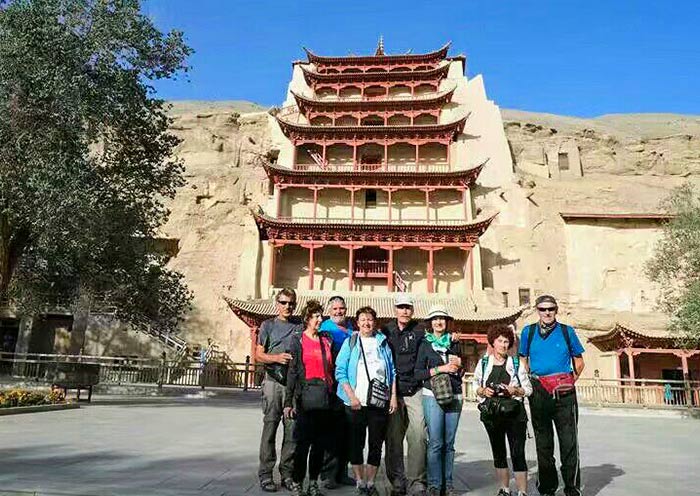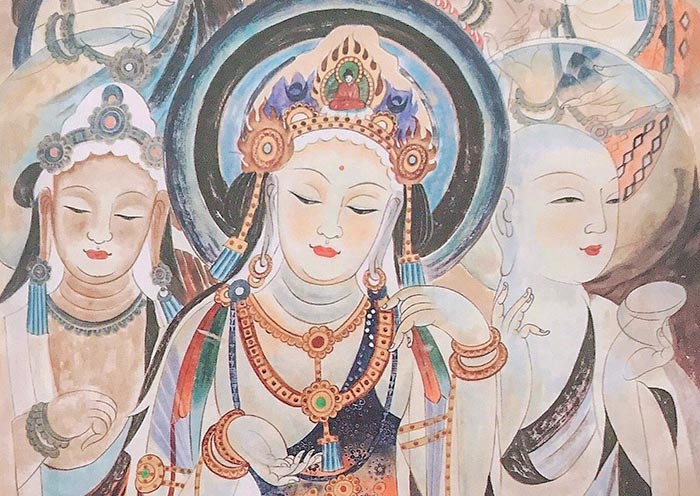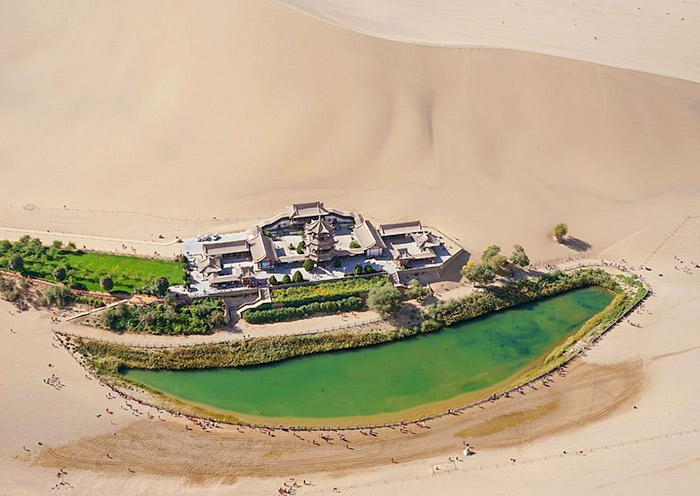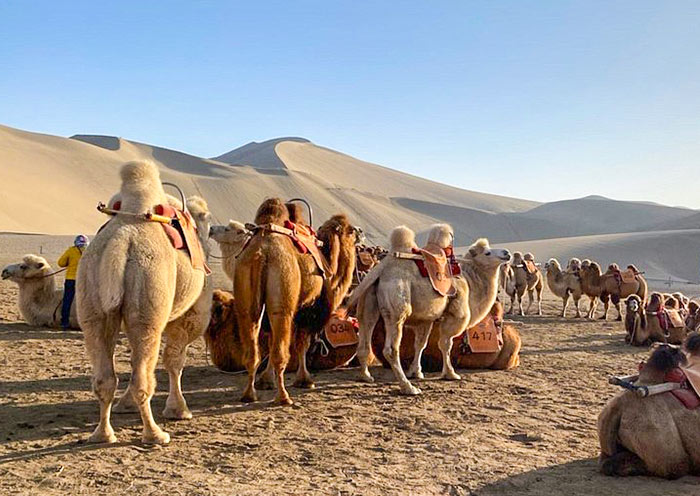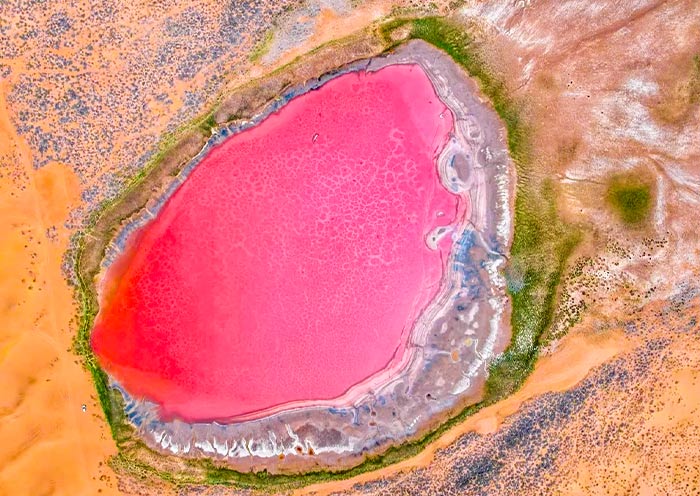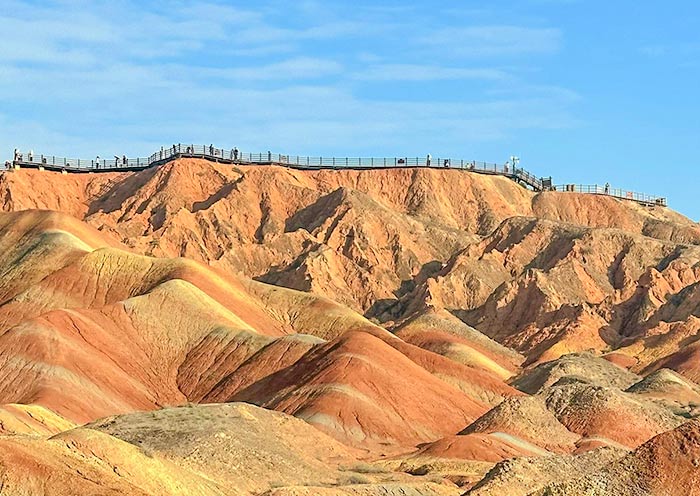Our 8 days group tour in December was amazing! Tokyo’s vibrant streets and Mount Fuji’s snow-capped beauty were breathtaking. Kyoto’s temples and Nara’s deer park offered a serene charm, while Osaka dazzled with its food and nightlife. Hiroshima’s Peace Memorial Park was deeply moving. The crisp winter atmosphere and festive illuminations added a magical touch. Traveling with a small group made the experience fun, seamless, and unforgettable!
3 Days Classic Dunhuang Tour: From Yumen Pass (Great Wall) to Mogao Caves
- Highlights
- Itinerary
- Price
- Trip Notes
- Accommodation
- Photos
- Reviews
Dunhuang Silk Road Tour: Tracing Xuanzang's Path for Nature and Cultural Discovery
Have you heard of the novel Journey to the West based on Tang Monk? Highly recommend our 3 Days Classic Dunhuang Tour which journeys from Yumen Pass to Mogao Caves. This is the best Dunhuang Silk Road Tour to Tracing Xuanzang's Path for Nature and Cultural Discovery.
Xuanzang, also known as Wukong's Master, is the historical inspiration for the novel Journey to the West. He embarked on a perilous journey to India in the 7th century AD. Take our 3 Days Dunhuang Tour to explore the city that Xuanzang spent for several years during his travels along the Silk Road.
1. Xuanzang's Departure for The Journey to The West: Yumen Pass (World Heritage)
Xuanzang began his westward journey by sneaking through Yumen Pass, braving the harsh desert landscape and the dangers of the unknown. Today, Yumen Pass is a testament to its historical importance, with 119 frontier poetry inspired by Yumen Pass during the Tang Dynasty, remnants of the Han Dynasty Great Wall, and ancient sites. Xuanzang's journey took him through the vast Gobi Desert (such as Yardang National Geopark), a challenging environment characterized by extreme temperatures, sandstorms, and scarce water resources.
2. Xuanzang's Stay after The Journey to The West: Mogao Caves (World Heritage)
Xuanzang translated numerous Buddhist scriptures at the Mogao Grottoes after his journey to India. The Mogao Caves, with their numerous chambers and quiet atmosphere, provided an ideal environment for his scholarly pursuits. Dunhuang served as a cultural hub along the Silk Road, offering Xuanzang the opportunity to connect with other Buddhist scholars and disseminate his findings. You will see many of Mogao Caves’ Buddhist murals and sculptures were created during Xuanzang's time of the Tang Dynasty (618–907 AD).
Contact us for a 3 Days Classic Dunhuang Tour to start your Journey to The West Tour to explore the history of Dunhuang, an ancient Silk Road city. Retracing Xuanzang's Path in Dunhuang from the desolate landscapes of Yumen Pass to the spiritual haven of Mogao Caves, this route provides a glimpse into the ancient world of the Silk Road.
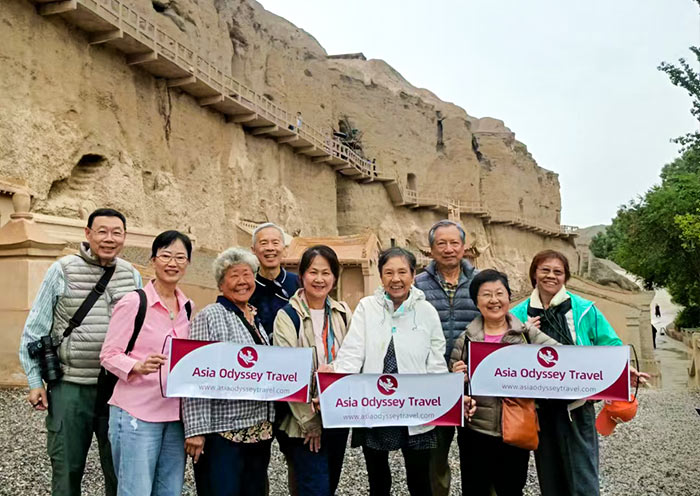
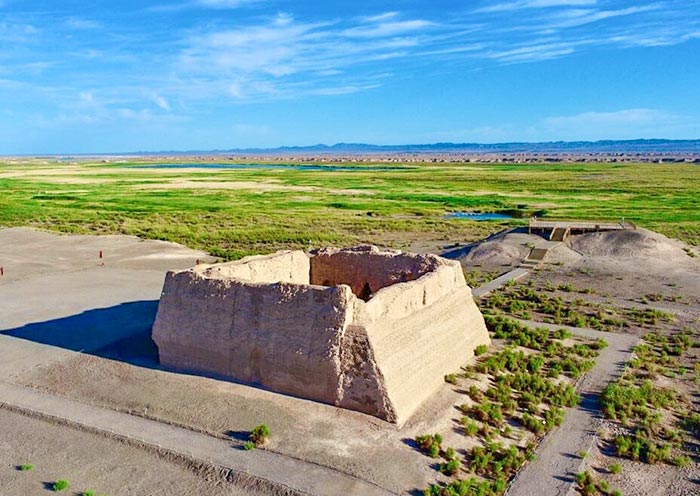
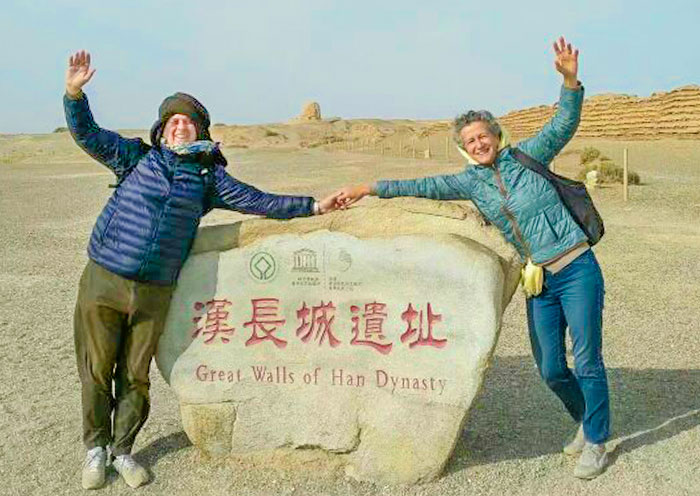
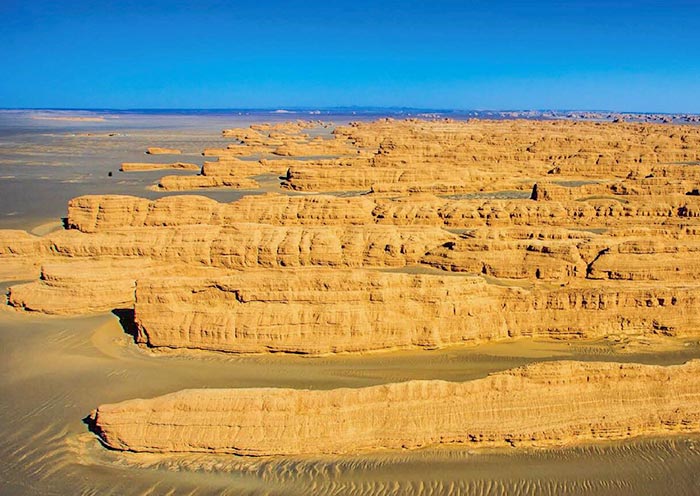
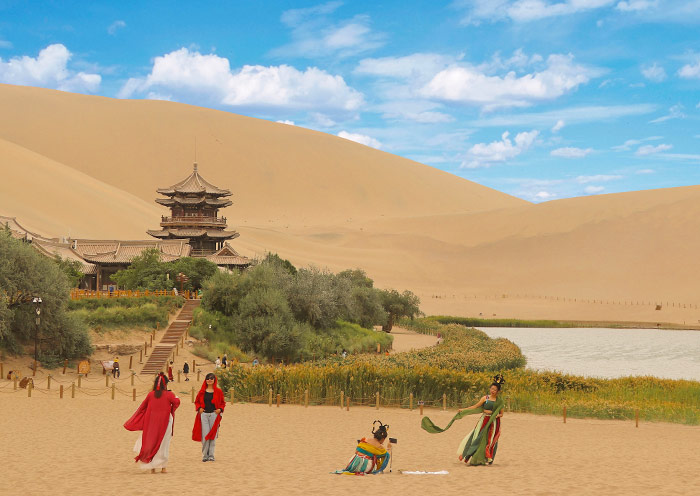
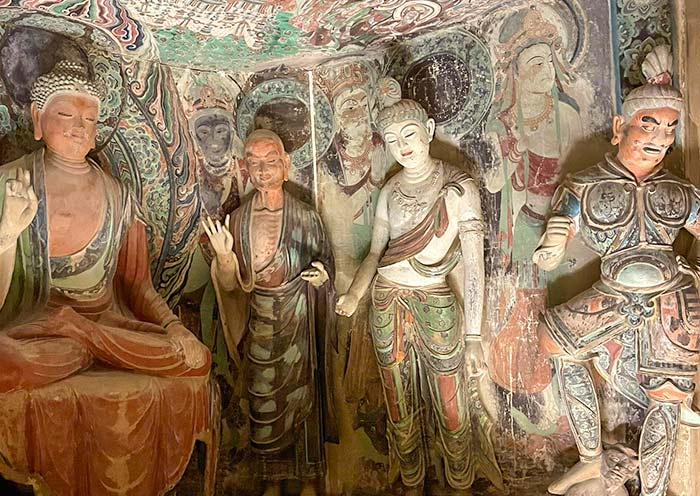
Itinerary at a Glance
Dunhuang City (1 Day)
Free Time Explore: Dunhuang Museum (Optional), Dunhuang Shazhou Night Market (Optional), Dunhuang Evening Show (Optional)
Yumen Pass (1 Day)
Yumen Pass (Jade Gate Pass; World Heritage; Han Dynasty Great Wall), Yardang National Geopark (Ghost City; Dunhuang UNESCO Global Geopark)
Dunhuang City (1 Day)
Mogao Caves (World Heritage), Mingsha Mountain Crescent Lake (First Spring in the Desert)
Itinerary Day by Day
Welcome to Dunhuang, a must-visit city located in the Gansu province of China! Upon arrival in Dunhang, your guide will meet you at the airport and escort you to your hotel. You can explore on your own based on your arrival time. Feel free to seek travel ideas from your tour guide.
Dunhuang, a city in Jiuquan (酒泉市), which was formerly known as Suzhou (肃州), is the birthplace of the "su" character in Gansu Province (甘肃的“肃”). Dunhuang is a desert oasis of ancient wonders. Discover the hidden gems of China's western frontier. Explore the breathtaking Mogao Caves, a UNESCO World Heritage Site adorned with vibrant murals and intricate sculptures. Trek through the Gobi Desert, marveling at the Crescent Lake's turquoise waters and towering sand dunes. From stargazing under pristine skies to experiencing the thrill of sandboarding, and camel riding, Dunhuang offers a captivating journey through time and nature. Dunhuang is also famous for Tunhuangology (敦煌学), a specialized field of study dedicated to exploring and interpreting the vast cultural and historical treasures in the Mogao Caves.
Free Time Ideas:
1. Dunhuang Museum (敦煌博物馆; Closed on Mondays; Reservation Required): It has distinctive architecture, blending cultural symbols such as the Great Wall, beacon towers, and ancient castle-style buildings in its exterior and color scheme. It houses over 13,355 cultural relics from the Neolithic period to the Ming and Qing Dynasties. The most treasured items include ink writings on hemp paper from the Western Han Dynasty (8 BC), a torch made of reeds from the Han Dynasty, and the Beiliang Stone Pagoda. Additionally, there is a 1:1 replica cave of Cave 45 (Tang Dynasty; 8th century) from the Mogao Caves, allowing you more time to admire and photograph the replicas up close.
2. Dunhuang Shazhou Night Market (敦煌沙洲夜市) for Dunhuang food. There are many distinctive snacks that you must try, such as Apricot Skin Water (杏皮水), Donkey Meat Noodles (驴肉黄面), and Bubble Oil Cakes (泡儿油糕). The locals in Dunhuang enjoy eating lamb, chicken, and beef, and they are good at noodle making.
Optional Evening Show: (Reservation Required)
1. "Ancient Sound of Dunhang《乐动敦煌》" (available year round) is the world's first cave-style immersive theatrical experience, telling the story of a young man from the Western Regions named Bai Xin in the early years of the Tang Dynasty who discovers the essence of music in the dancing murals of Dunhuang. Using modern technology and combining live performances, the performance reproduces cultural elements such as music, dance, poetry, costumes, and paintings from the Dunhuang murals.
2. "Dunhuang Celebration《敦煌盛典》" (peak season only) is the world's first large-scale desert live performance, set against the backdrop of the Crescent Lake in the Mingsha Mountain. The unique feature of a 360-degree rotating and movable audience seat enhances the tragic love story of the young painter and the princess, reimagining the former prosperity of the ancient Silk Road and showcasing the unique cultural and folk customs of Dunhuang (including "Iron Flower").
3. "Encore Dunhuang《又见敦煌》" (peak season only) is a large-scale indoor experiential drama directed by Wang Chaoge王潮歌, one of the chief directors of the 2008 Beijing Olympics. Audience members "journey" through the scripture caves, Mogao Caves, and Silk Road, experiencing Dunhuang culture and the Silk Road firsthand.
4. "Thousand-Handed, Thousand-Eyed《千手千眼》" (peak season only) is a large-scale theatrical production performed by the China Disabled People's Performing Art Troupe, showcasing the folk story of "Wonderful Kindness Saves Father." The dance movements are graceful, with deep cultural significance and extremely high artistic standards.
Arrival Ideas:
1. How to get to Dunhuang By Air: Dunhuang Mogao International Airport (敦煌莫高国际机场; or Dunhuang Airport) is located about 13 km from city center and 22 km from the Mogao Caves. Direct flights connect Dunhuang with major cities in China, such as Beijing (3h 45min), Shanghai (4h 25min), Chengdu (2h 40min), Xian (2h 40min), Lanzhou (1h 35min)... It's essential to check flight schedules in advance, as not all routes operate year-round.
2. How to get to Dunhuang By High-speed Train: Dunhuang can be reached by train through Dunhuang Railway Station and Liuyuan Railway Station. Dunhuang Railway Station is situated 10 km from the city center and offers bullet trains from Lanzhou (8-9 hrs) and Jiayuguan (3 hrs). Liuyuan Railway Station, around 130 km from downtown Dunhuang, provides high-speed trains to Urumqi (4.5 hrs), Jiayuguan (2 hrs), Zhangye (3-4 hrs), Turpan (3.5 hrs), among others. Normal trains from major cities like Beijing, Shanghai, and Chengdu also make stops at Liuyuan station.
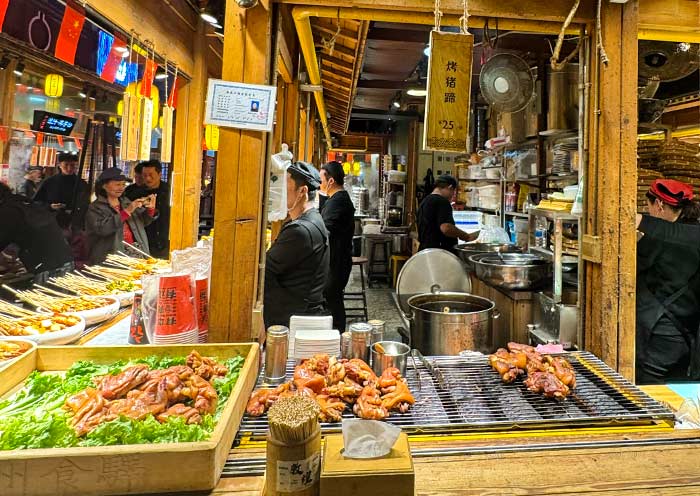
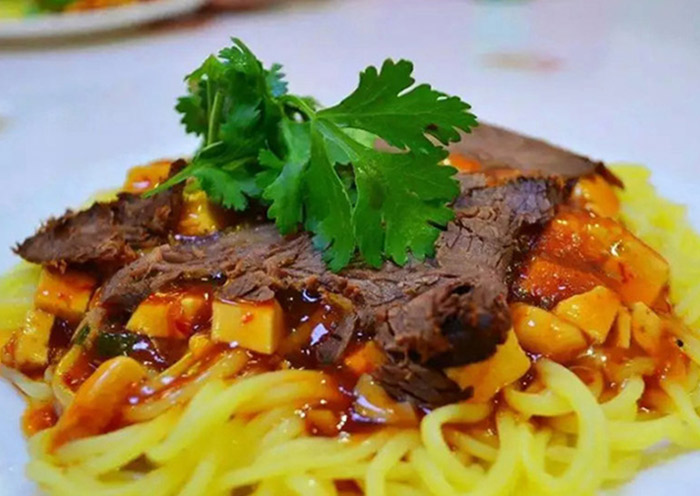
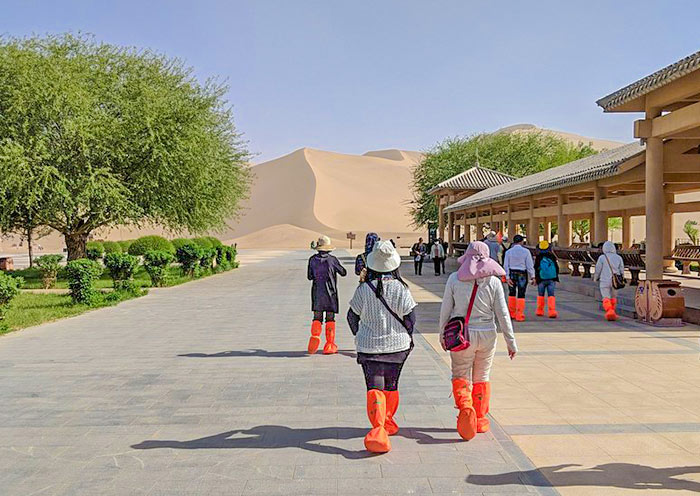
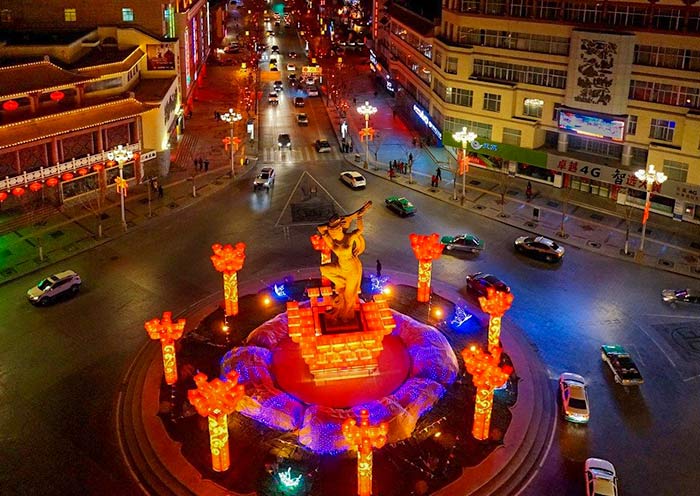
Enjoy a Dunhuang Silk Road Tour by visiting Yumen Pass (Jade Gate Pass), Han Dynasty Great Wall, Yardang National Geopark (Ghost City), Mingsha Mountain Crescent Lake (Sunset).
In the morning, head to Yumen Pass (World Heritage) which is about 100 km (2h) from Dunhuang City center. Yumen Pass (Jade Gate Pass玉门关), like Jiayuguan Pass, is one of the 13 Passes along the Great Wall of China. It is known for its role in the trade of jade to and from the Western Regions, hence its name. Stepping through Jade Gate Pass, you'll uncover a gateway to the history of the Hexi Corridor. Once a vital route connecting central China to the Western Regions, this site was a radiant gem along the Silk Road, marking the end of the Hexi Corridor and preserving over 2 millennia of history. In ancient times, soldiers departed Yumen Pass for distant lands, facing uncertain fates in battles for their country. Returning to Yumen Pass symbolized the joy of homecoming after triumphs on distant fronts. Today, Yumen Pass stands as a UNESCO World Heritage Site (Silk Roads: the Routes Network of Chang'an-Tianshan Corridor), blending cultural landscapes and historical treasures into a captivating tourist destination, a place of longing for lovers of frontier poetry (outback poetry).
Mention Yumen Pass in China, and thoughts drift to "When spring breezes cannot pass through Yumen Pass春风不度玉门关," lines from the Tang Dynasty poem Ballad of Liangzhou《凉州词》. These lines portray the desolation and grandeur of the desert, igniting yearnings for this ancient pass. Approaching the ruins of Yumen Pass on the southern bank of the Shule River (疏勒河), you'll witness a natural tapestry of deserts, rivers, and lakeshores, while absorbing the rich history and culture embedded in the poetry of Yumen Pass. Did you know that in the Tang Dynasty (618–907 AD), Yumen Pass not only stood as one of the largest frontier cities but also inspired 119 frontier poems, shaping tales of border wars, harsh lands, exotic customs, achievements, longings, and cultural exchanges?
From its military stronghold resonating with the clang of weapons to the bustling trade post of the Silk Road, each stone and grain of sand at Yumen Pass narrates tales of time. Here, the stories of Zhang Qian's mission to the Western Regions, Huo Qubing's march into the Hexi Corridor, Ban Chao's governance of the Western Regions, and the sneaking of Tang Monk Xuanzang (the inspiration for the novel Journey to the West) through Yumen Pass echo through the ages.
Today, explore the preserved relics within the site, including the Small Square City Ruins (小方盘城遗址; Yumen Pass), Han Dynasty Great Wall Ruins (汉长城遗址), and Large Square City Ruins (大方盘城遗址; a military supply point;12 km away). Beyond Yumen Pass, from an observation deck, behold the distant Shule River, a symbol of distant lands unreachable for many warriors over the centuries.
Afterward, hop on a sightseeing car (included) to visit the Han Dynasty Great Wall, located 5 km from Yumen Pass. Built during the reign of Emperor Wu of the Han Dynasty (206 BC - 220 AD), the Han Dynasty Great Wall predates the Ming Dynasty Great Wall at Jiayuguan by over 1,300 years. It stands as one of the best-preserved sections of the Han Dynasty Great Wall in the Hexi Corridor, warding off invasions while serving as a symbolic gateway for travelers from the West. Constructed using local materials like sand, stones, reeds, and willow, the Han Dynasty Great Wall (Reeds Great Wall芦苇长城) is a testament to ancient wisdom, with its raw materials still visible today, a true marvel of human ingenuity.
Yumen Pass Scenic Area's Shows (Peak Season Only):
1.Welcome Ceremony of Han Dynasty (都尉迎宾);
2.Traditional Singing & Dance (秦歌汉舞);
3. Ancient Passport (通关文牒);
4. Drumming Show of Han Dynasty (大汉战鼓). (Notes: Each with one performance in the morning and one in the afternoon.)
Notes:
1. The Sightseeing Buses of Yumen Pass & Yardang Geopark: The Small Square City is located near the entrance and accessible by foot. The Han Dynasty Great Wall (5km away) and Large Square City (12km away) require taking a sightseeing bus (included). You will taking a sightseeing bus (included) to enjoy the view inside Yardang Geopark.
2. The journey on this day is quite long, with strong UV exposure and high temperatures. Remember to stay hydrated, and pack snacks for unexpected needs!
3. Gansu of Northwest China is an underdeveloped inland region with relatively challenging conditions in various aspects.
After lunch, pay a visit to Yardang National Geopark which is 80 km (1.5h) away. The Yardang National Geopark, which belongs to Dunhuang UNESCO Global Geopark (中国敦煌世界地质公园), is commonly known as the "Ghost City," and is acclaimed as one of the Three Most Beautiful Yardangs in China." This rare natural sculpture museum is another wonder of Dunhuang, formed by the aeolian erosion process and presents Quaternary geological relics and vast desert landscapes. Here, the wind takes center stage, bearing witness to the passage of time. Within the park, you'll find famous attractions such as the Lion-faced Wall-like Yardang (狮身人面-墙状雅丹), the West Sea Fleet-ridge-like Yardang (西海舰队-垄岗状雅丹), the Divine Turtle Setting Sail-transformed Yardang (神龟出海-变形雅丹), the Peacock Jade Pillar-like Yardang (孔雀玉立-柱状雅丹), and the Golden Lion Welcoming Tower-like Yardang (金狮迎宾-塔状雅丹). This location has served as a popular filming site for movies and TV shows like Hero and Crouching Tiger, Hidden Dragon. Let your imagination roam free as you enjoy exploring this ghost city sculpted by the wind. You can even find the four Landscapes in the geopark namely: Yardang, Desert, Gobi, and Wetland.
In the late afternoon, time to visit Mingsha Mountain & Crescent Lake (鸣沙山月牙泉) and even sit on the peak of Singing Sand Dunes (1,715 m) to wait for a stunning sunset in front of the Crescent Spring. The Singing Sand Dunes & Crescent Lake is praised as “one of the Top 5 Most Beautiful Deserts in China," "China's Best Natural Landscape Tourist Destination," and "China's Most Beautiful Moon-watching Spot." It is a geological park known for the unique spectacle of mountains, spring, and sand coexisting in the desert. You can enjoy various activities (self-pay) such as camel riding, sand sliding, desert motorcycles, off-road vehicles, helicopters, gliders... You will meet people in costumes of traditional Han clothing or Flying Apsaras.
The Mingsha Mountain is named for the sound produced by the moving sands, with recorded volumes of the singing reaching up to 83 decibels. This phenomenon of sand-producing sound is one of the Dunhuang Eight Views, known as "ShalingQingming沙岭晴鸣" in the Dunhuang County Chronicles《敦煌县志》, where Dunhuang's ancient name of Shazhou (沙洲) also originates. The Singing Sand Dunes stretches from the Mogao Caves in the east to the Dang River in the west, spanning about 40 km east to west and 20 km north to south. The mountain is formed from deposits of fine sand in five colors (red, yellow, green, black, white). The sand of Mingsha Mountain is carried by the wind from the Gobi Desert and the Kumtag Desert to settle here, gradually accumulating over time. The Crescent Lake is nestled amidst the Mingsha Mountain, named for its crescent moon-like shape. The spring water spans 242 meters from east to west and can reach up to 50 meters wide from north to south, with an average depth of around 1.5 meters. The spring is home to the Ironback Fish (铁背鱼local fish) and Seven Star Grass (七星草; medicinal herb) which is included in the "Three Treasures of Crescent Spring月牙泉三宝" by locals (the third one is Five-colored Sand五色沙), believed to bring good luck to people. So try your luck to find them. Remarkably, the sand has not encroached upon the spring, and the water remains clear and abundant, traversing through time, creating the world wonder of the "First Spring in the Desert沙漠第一泉."
Notes:
1. Optional activities in the Mingsha Mountain Scenic Area: Shoe covers; Sightseeing vehicle; Camel riding; Motorcycle; Off-road vehicle (seats 3 people); Paragliding; Helicopter (seats 3 people).
2. When participating in desert recreational activities, take care of your photographic equipment and prevent sand from entering the camera. When riding a camel, follow the staff's instructions when mounting and dismounting.




This morning, you will enjoy a wonderful Dunhuang Culture Tour by visiting Mogao Grottoes (4-4.5hrs), a UNESCO World Heritage site. Then, it is time to end your Dunhuang tour by tranfer you to the airport or train station.
Dunhuang Mogao Grottoes is the must-visit place for a trip to Gansu. You may have read many stories about A. Stein (斯坦因a British archaeologist and explorer) and the vast trove of artifacts (Paintings, Sculptures, Manuscripts) he brought from the Mogao Grottoes in the early 20th century. You may have already seen the artifacts Stein collected in the British Museum in London. Or you may have heard of Paul Pelliot (French archaeologist & Sinologist) who like A. Stein, conducted several expeditions to Dunhuang and collected a large number of artifacts which is primarily housed in the Guimet Museum in Paris, France. Welcome to visit Mogao Grottoes the source of the world famous Dunhuang Manuscripts (Dunhuang Yi shu敦煌遗书; Cave 16-17) and explore valuable insights into the history and culture of the Silk Road.
The Mogao Caves (Mogao Grottoes莫高窟), also known as the Thousand Buddha Grottoes (千佛洞), are acclaimed as the "Treasure House of Eastern Art东方艺术宝库." The remaining 735 caves are dotted along cliffs rising about 15-30 m high and over 1,700 m, forming a magnificent spectacle of this world cultural heritage site. Despite the significant loss of artifacts to oversea museums, the Mogao Caves remain one of the world's largest and most richly endowed repositories of Buddhist art. Spanning sixteen kingdoms, Northern Wei, Western Wei, Northern Zhou, Sui, Tang, Five Dynasties, Song, and Western Xia dynasties, the construction of the Mogao Grottoes lasted for over a thousand years until the Yuan Dynasty, resulting in about 45,000 ㎡ murals and 2,415 clay sculptures. In the year 366 AD, the first cave of the Mogao Caves was carved into the cliff by the Monk Le Zun (乐僔; over 1,650 years ago). In the 7th century, Xuanzang (唐僧) translated numerous Buddhist scriptures at the Mogao Caves. In 1900, Daoist Wang (王圆箓) discovered the Library Cave (藏经洞; Sutra Cave; Cave 16). From 1941 to 1943, Zhang Daqian (张大千), a prodigious Chinese artist of the twentieth century, copied 276 murals here.
At the Mogao Caves, you can explore various types of grottoes (large statue caves, Nirvana caves, central pillar caves, vaulted ceiling caves, hall caves) and learn about the pigments used by ancient artists in painting murals (cinnabar, orpiment, azurite, mica, gamboge, gold leaf, shell powder). You can admire narrative paintings of Buddhist themes (the life of Shakyamuni Buddha, the Nine-Colored Deer Sacrificing Itself to Save Others), diverse clay sculptures (Buddha statues, Bodhisattva figures, guardians, deities), Flying Apsaras (飞天) and Swirling Dances (Sema; 胡旋舞) in the prosperous Tang Dynasty, as well as the attire and customs of patrons from various dynasties. At the Mogao Caves, you can witness the brilliance and charm of the ancient Silk Road and the efforts and achievements of generations of cultural heritage preservation workers and researchers (such as Chang Shuhong常书鸿, a Chinese painter known as the "guardian of Dunhuang"敦煌守护神).
You can start at the Mogao Caves Digital Center (莫高窟数字中心), watch a 40-minute digital film, and then take a shuttle bus to the caves. Guided by the site interpreters, you will visit 8 caves sequentially (Ticket A; no photography allowed inside the caves). You may have the chance to see significant caves like the Library Cave (Caves 16-17; the largest cave), the Nine-Storey Tower (Cave 96; one of Mogao's iconic structures; the largest Buddha statue), the Nirvana Sutra Cave (Cave 148; reclining Buddha), the Early Tang Treasures Cave (Cave 332), and the Northern Wei Masterpieces Cave (Cave 257). The actual eight caves visited may vary based on the site's conditions. If interested, you can visit the Cultural Relics Protection and Display Center (文物保护陈列中心) to see 1:1 replicas of eight special caves, including Caves 275, 249, 285, 419, 220, 217, 25, and 3 (photography allowed). After the tour, you can return to your hotel to rest after lunch.
Free Time Idea:
Coffee Time in Dunhuang Book Center (敦煌书局Reservation required): A popular spot in Dunhuang, a modern lifestyle aesthetic space that combines reading, cultural creativity, coffee, and events.
Notes:
1. To protect the caves, the Mogao Caves implemented a real-name reservation system for timed visits, implementing a daily limit on the number of visitors. The ticketing system includes A/Regular tickets (6,000 tickets/day) and B/Emergency tickets (12,000 tickets/day; for domestic visitors only). A Ticket includes access to 8 caves and 2 digital movies. B ticket includes access to 4 caves and the Cave Artifacts Conservation and Research Exhibition Center.
2. Visitors must follow the visitingarrangement set by the management of the Mogao Caves on the day of the visit. The visiting order of the Mingsha Mountain and the Mogao Caves is subject to change.
3. If you are particularly interested in the caves, you can also purchase tickets for special caves at the site (may require queuing) to explore more exquisite caves. The special caves (self-pay) are divided into Line 1 (Caves 45, 320, 321, 420, 9) and Line 2 (Caves 275, 45, 156, 158, 159).
4. During the Dunhuang Cultural Expo or in case of inclement weather or other factors affecting the visit, if the Mogao Caves cannot be visited as planned, our company will refund the Mogao Caves tickets according to the actual cost, or arrange a visit to the Western Thousand Buddha Caves as an alternative.
In the afternoon, it is time to end your 3 Day Duhuang Tour. Thank you for choosing Asia Odyssey Travel for your China Tour, and we are always here working for you and hope to see you again for your next trip to Asia. Safe journey!
Extension Ideas:
1. If you wish to extend your trip and explore other highlighted parts of Gansu, such as Dunhuang, Zhangye, Lanzhou, Jiayuguan, Wuwei, Jiuquan, Guazhou, and more, we can help you with the arrangements.
2. If you plan to continue your exploration to other cities in China, such as Xining, Turpan, Chengdu, Lhasa, Xian, Beijing, and Shanghai, please feel free to let us know. We can customize your itinerary and assist you with travel arrangements.
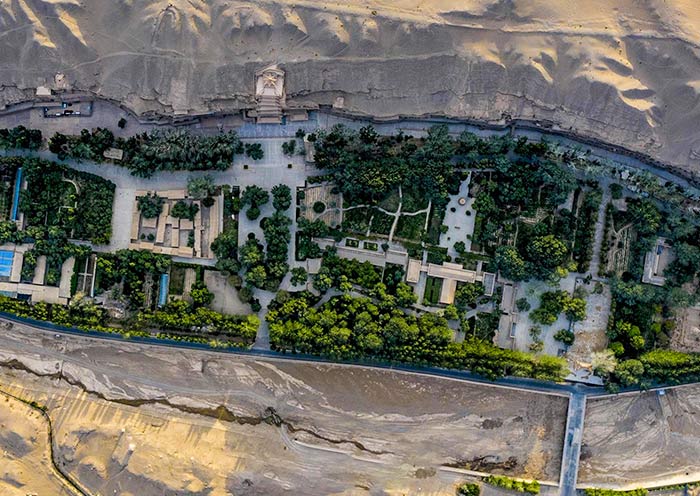
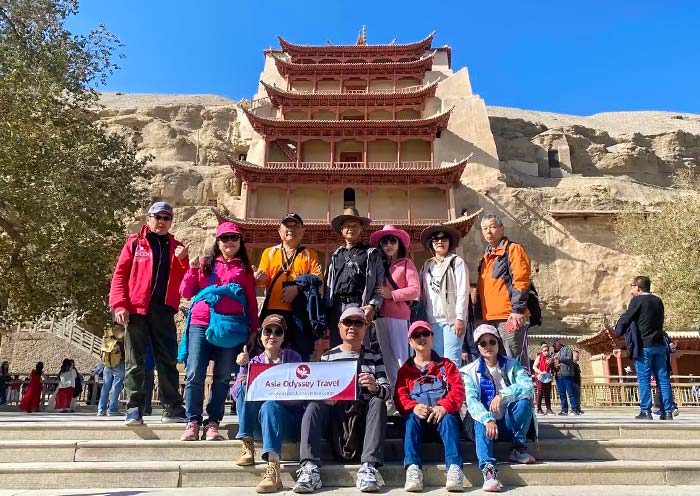
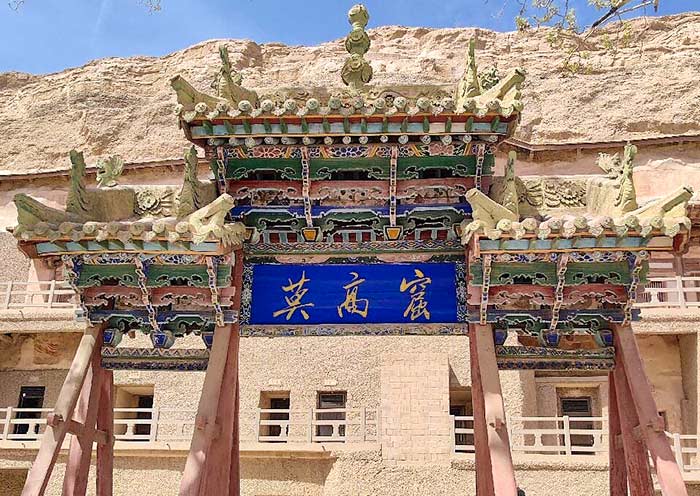
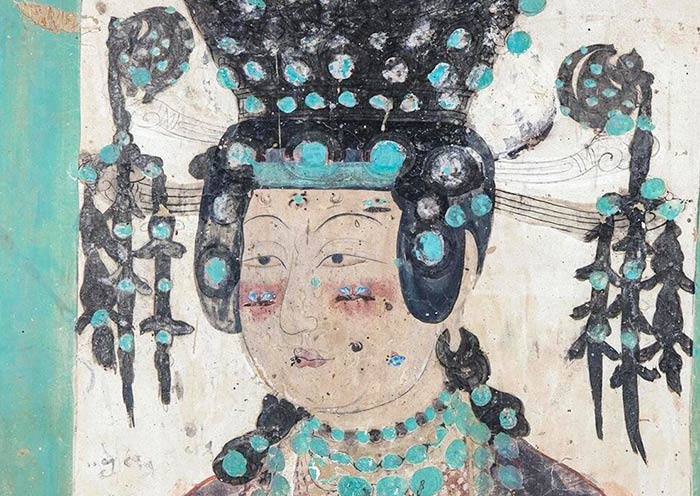
Price: What’s Included & What’s Excluded
What's Included:
What's Excluded:
Hotel Conditions for Gansu & Silk Road Tours
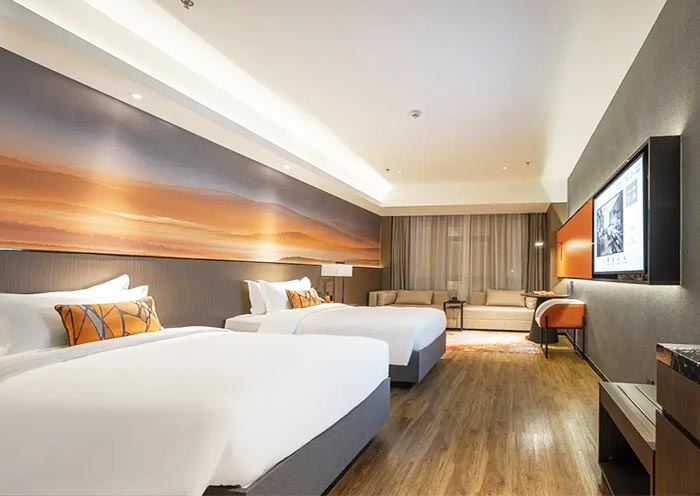

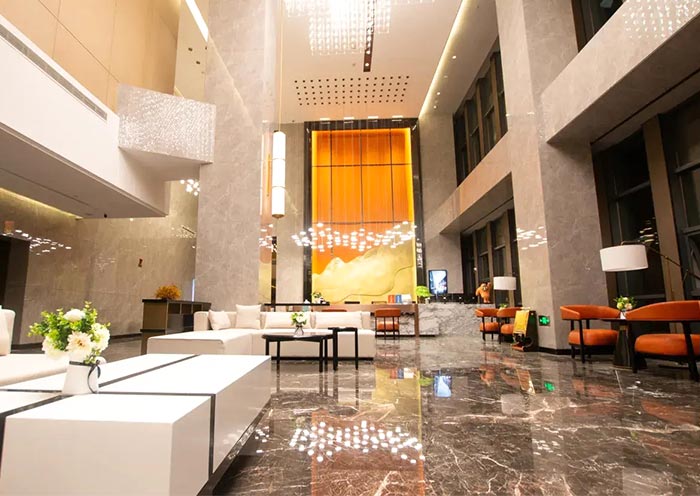
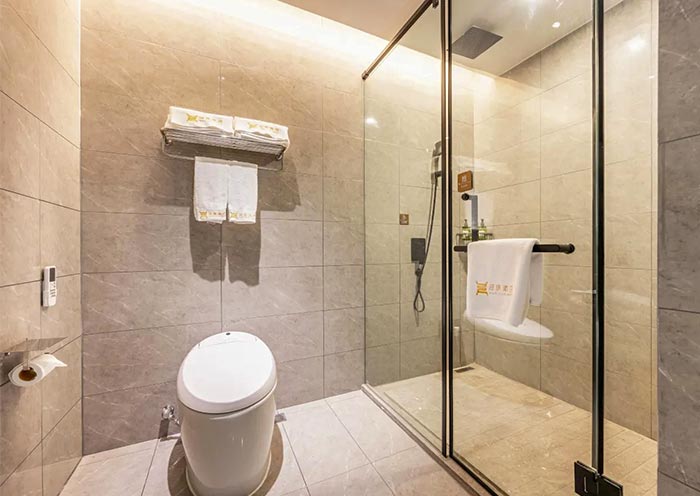
3 to 5 Star Hotels on the Silk Road Route Destinations:
Enjoy comfortable 3-star, 4 star or 5 star hotels along the Silk Road route, offering essential amenities for a relaxing stay after each day's adventures. These hotels provide a welcoming atmosphere with friendly service, perfect for Silk Road travelers.
Recommended Length to Stay (Xinjiang, Gansu & Qinghai)
To fully experience the Silk Road's highlights, we recommend a silk Road tour of 5-12 days. (1) One-Destination Deep Dive: Immerse yourself in the wonders of either Xinjiang (3-5 Days) or Gansu (5 Days). (2) Classic Silk Road Experience: Combine Xinjiang and Gansu together for a comprehensive exploration.(3) Ultimate Silk Road Journey: Extend your trip to include Qinghai and experience China’s diverse landscapes.
Standard Twin Room
Standard twin rooms on Silk Road group tours feature two comfortable beds, private bathrooms, and basic amenities. These rooms are designed for travelers seeking a cozy, convenient space to rest and recharge during their Silk Road journey.
Photo Gallery for This Itinerary
Latest Gansu Tours Reviews from Our Customers

Sam Lin
Singapore
Date of Experience: Dec 24, 2024
Tour Customized by: Vincent
You May be Interested in This Tour: 8 Days Best Japan Group Tour: Japan Highlights & Hiroshima

Zhang Xin Hua
Malaysia
Visiting Japan’s Golden Route in October was incredible! From Tokyo's vibrant city life to the serene beauty of Mount Fuji, every stop was unforgettable. Kyoto’s temples and Nara’s friendly deer captured Japan’s charm, while Osaka’s food scene was a delight. The mix of tradition and modernity made it a perfect 7-day journey!
Date of Experience: Oct 26, 2024
Tour Customized by: Allan
You May be Interested in This Tour: 7 Days Japan Golden Route Tour in Small Group

Dan Z
Washington DC
Date of Experience: Aug 24, 2024
Tour Customized by: Rex
You May be Interested in This Tour: 7 Days Japan Kansai Tour with Hiroshima: Osaka, Kyoto, Uji & Nara
Price: Request
(Based on a private tour for two people. Price varies depending on program, travel date, number of people.)
Free Enquiry! You don’t need to pay for the reservation.
- United States (+1)
- Australia (+61)
- Singapore (+65)
- Malaysia (+60)
- Philippines (+63)
- Canada (+1)
- Italy (+39)
- Indonesia (+62)
- United Kingdom (+44)
- Spain (+34)
- Mexico (+52)
- Hong Kong (+852)
- Thailand (+66)
- United Arab Emirates (+971)
- New Zealand (+64)
- South Africa (+27)
- Germany (+49)
- Brazil (+55)
- India (+91)
- France (+33)
- Vietnam (+84)
- The Netherlands (+31)
- Saudi Arabia (+966)
- Ireland (+353)
- Argentina (+54)
- Switzerland (+41)
- Romania (+40)
- Pakistan (+92)
- Japan (+81)
- Portugal (+351)
- Bangladesh (+880)
- South Korea (+82)
- Puerto Rico (+1)
- Türkiye (+90)
- China (+86)
- Belgium (+32)
- Qatar (+974)
- Greece (+30)
- Taiwan (+886)
- Austria (+43)
- Poland (+48)
- Israel (+972)
- Chile (+56)
- Sri Lanka (+94)
- Nigeria (+234)
- Peru (+51)
- Colombia (+57)
- Hungary (+36)
- Nepal (+977)
- Denmark (+45)
- Bulgaria (+359)
- Norway (+47)
- Slovenia (+383)
- Sweden (+46)
- Kuwait (+965)
- Costa Rica (+506)
- Ecuador (+593)
- Venezuela (+58)
- Malta (+356)
- Croatia (+385)
- Tunisia (+216)
- Czechia (+420)
- Mongolia (+976)
- Bahrain (+973)
- Mauritius (+230)
- Papua New Guinea (+675)
- Cambodia (+855)
- Dominican Republic (+1)
- Luxembourg (+352)
- Finland (+358)
- Guatemala (+502)
- Myanmar (+95)
- Maldives (+960)
- Slovakia (+421)
- Laos (+856)
- Serbia (+381)
- Brunei (+673)
- Oman (+968)
- Macao (+853)
- Panama (+507)
- Morocco (+212)
- Jordan (+962)
- Georgia (+995)
- Fiji (+679)
- Bolivia (+591)
- Lithuania (+370)
- Bahamas (+1)
- Cyprus (+357)
- Latvia (+371)
- Bhutan (+975)
- Iraq (+964)
- Iran (+98)
- Kenya (+254)
- Jamaica (+1)
- Zimbabwe (+263)
- Azerbaijan (+994)
- Uruguay (+598)
- Estonia (+372)
- Andorra (+376)
- Cameroon (+237)
- Ghana (+233)
- Kazakhstan (+7)
- Nicaragua (+505)
- Egypt (+20)
- Russia (+7)
- Albania (+355)
- Réunion (+262)
- Montenegro (+382)
- Algeria (+213)
- Afghanistan (+93)
- Martinique (+596)
- Uganda (+256)
- Honduras (+504)
- North Macedonia (+389)
- Trinidad and Tobago (+1)
- Suriname (+597)
- Antigua and Barbuda (+1)
- Zambia (+260)
- Ukraine (+380)
- Armenia (+374)
- Barbados (+1)
- Belarus (+375)
- Palestine (+970)
- Lesotho (+266)
- Moldova (+373)
- Ethiopia (+251)
- French Polynesia (+689)
- Gambia (+220)
- Guam (+1)
- Gibraltar (+350)
- Isle of Man (+44)
- New Caledonia (+687)
- El Salvador (+503)
- Comoros (+269)
- Seychelles (+248)
- Chad (+235)
- Samoa (+685)
- Cook Islands (+682)
- Palau (+680)
- Paraguay (+595)
- DR Congo (+243)
- Solomon Islands (+677)
